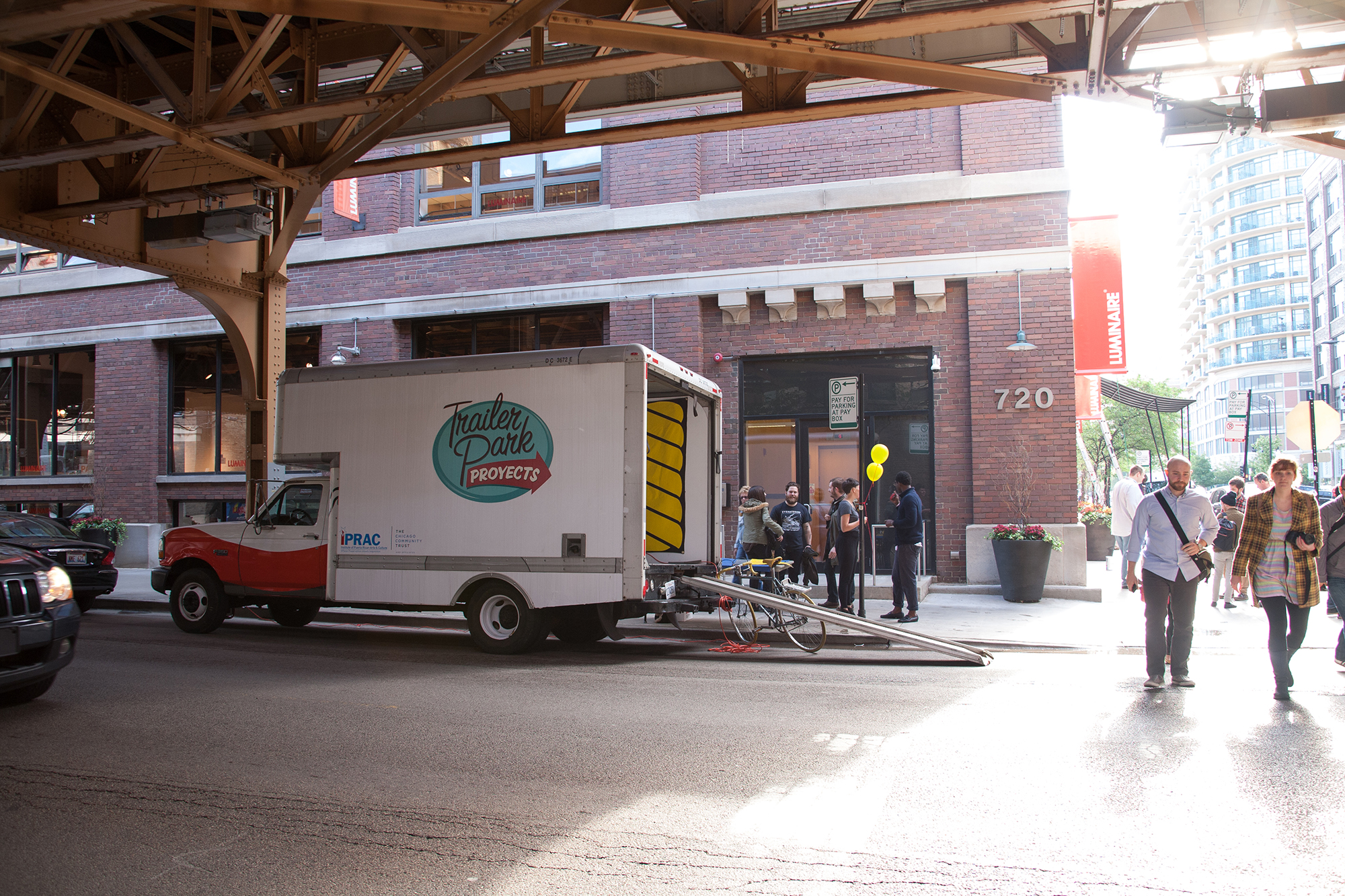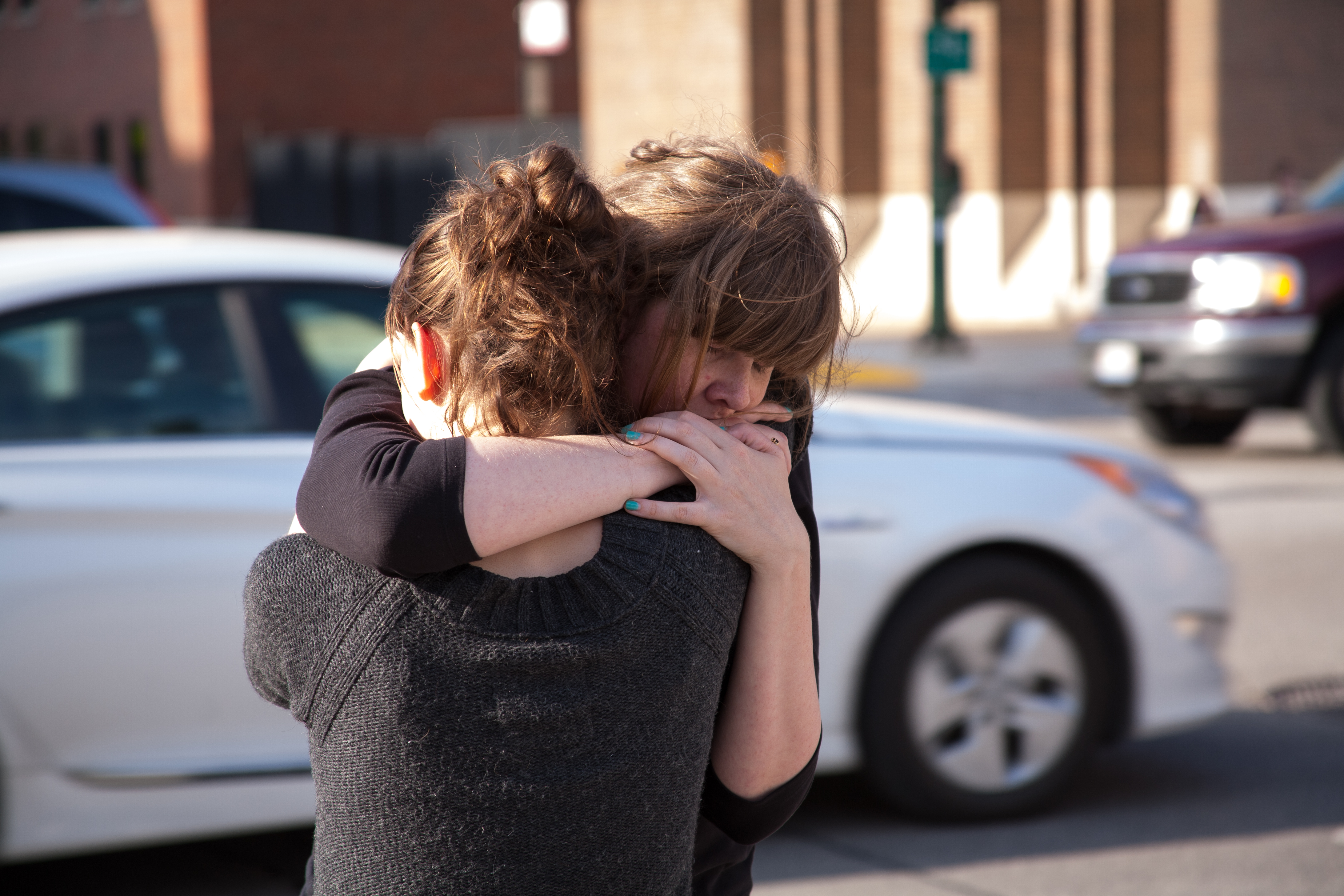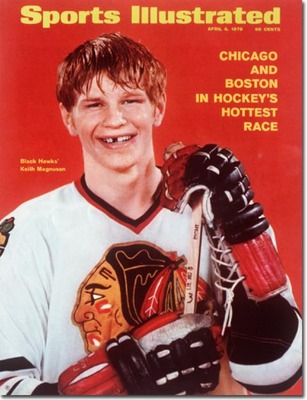Amaris Ketcham, who’s creative non-fiction “First Rust” appeared in No 11 The Wild, is a woman with her hands in a lot of pots. She is educator at University of New Mexico, a Graphic Designer, a regular contributor to arts and lit blog Bark, and an author currently working on two large projects in an X Files “fan poetry” chapbook and a collection of essays about her current home state. Even as a person as over committed as I [Zach] am, the amount of successful diversification she is able to achieve seems exhausting. However, from what one can deduce, the array of fields Amaris is involved in has given her an experience with in the larger creative culture picture allowing her to have a very poignant finger on the pulse of what is going on in the community we are all helping to create. You can find out more about Amaris and her work on her website.
Composite: You’re teaching at UNM in Albuquerque, received your MFA at Eastern Washington University, and may or may not have spent some time in Kentucky. How did you get to these places and where you are now, locationally speaking. How long did it take you to learn to spell Albuquerque without thinking about it?
Amaris Ketcham: Actually, I’ve spent quite a bit of time in Kentucky. I grew up on the Bourbon Trail, and I came to New Mexico first as an undergraduate at UNM. When I was eighteen, I wanted to live in America, but in a place that was wholly different than what I thought of as “American.” I narrowed my choices down to New Mexico and Hawaii and flipped a coin. The trickiest thing about spelling Albuquerque was that so many people pronounce it “Alburquerque,” which I think is closer to the original Arabic spelling, meaning a place of apricots.
After a few years, I missed the rain and green landscapes, so I relocated to Washington, first living in Spokane and then Seattle. When I was there, I started to miss the cultural diversity that New Mexico has. Even though Washington and Kentucky are very similar, I think that I actually suffered from culture shock. When I moved back to New Mexico last summer, it was during monsoon season, so the lavender was blooming and there were double rainbows every afternoon. It was gorgeous, and I had this feeling like I was actually coming home.
C: Your practice exists quite amazingly dead center of being a designer and an author. People tend to fall to one side or the other. What gave you the gusto and made you decide to embrace both equally? How does the balance fall out for you in your practice?
AK: I started working as a designer before I began seriously writing. Writing and designing actually share many of the same characteristics. Both are centered on communicating an idea and the most effective means to achieve relating that idea to an audience. Each uses movement and structure, whether it’s figuring out what information needs to logically come next in a narrative or where the eye lands and moves to next on the page. That attention-grabbing lead sentence might be thought of as where the eye would land first on a design, and then proximity of information creates a flow. You use repetition to keep the audience engaged while contrast surprises the audience and give depth to the work.
Both work with visual imagery, creating a tangibility of ideas, and it’s important to move away from using cliché imagery, or visual metaphors such as “love is like a red rose.” For instance, I was recently working on a project, a cover design for a set of philosophical and spiritual dialogues, where the client asked for a silhouette of a young woman holding her arms up to the sky, as if embracing wisdom from heaven. This “inspirational” image is overused in spiritual designs, so I moved away from it, and worked instead on incorporating an surgical drawing from Gray’s Anatomy, with a head sort of exploding into watercolor clouds and birds in flight. The metaphor’s impact is the same, but it implies less passivity.
So, I like to think that designing helps my writing rather than taking time away from it, because I’m still practicing the same skills. I started moving away from designing once I began teaching, which means that now I can be much more selective about the projects I pick up.
C: One of your main gigs is working as the Faculty Advisor for the University of New Mexico Honors College Literary Journal, Scribendi. Following into your own footsteps, you’re taking the year to teach students both the technical tool sides of publication, but also the editorial and content creation side of things. Pedagogically, do you think it’s important for the next generation of creatives to have the full rounded suitcase, or is your focus more on collaboration and teaching of both sides and the need for each other?
AK: I like to think of my Scribendi course as merging an arts education with STEM education’s technological emphasis. Because the magazine staff participation is a class rather than an extracurricular activity, we can really dive into design, copyediting, literature and arts assessment, desktop publishing software, print production, and small business (small press) management. Each student acquires this diversity of skills throughout the year.
I do think that it’s important for students to work on becoming well rounded. One of the things that I have been thinking a lot about is that these younger millennials are maturing in a society that values content curation. They start a Tumblr page and instead of putting up their own material (as with blogging or writing in Live Journal), they select images and blurbs from the Internet as a way to relate and display themselves to the world. In one sense, they are already understanding what effort and thought goes into assembling a cohesive work, like a magazine or exhibit, but in another sense, they aren’t creating the work themselves.
One of the things that I noticed students doing this year was communicating only animated gifs. One would make a comment and use a gif as a supporting statement, and another student would respond with an argument (“or the audience might think this:”) and find some other gif that displayed the thought. Before long, there would be nothing but this chain of moving frames representing a conversation. So the challenge becomes, okay if you’re going to communicate in this way, let’s open Photoshop and learn how to make our gifs rather than spending all of that time trying to find the right one to share our idea.
Finding this balance between creating and curating is going to be something that becomes more and more important for future generations, so it’s important that they learn the tools necessary to express themselves, and in that sense, be rounded.
C: This has really been on my mind as well, especially within a blogging context. I am of the generation I came of age actively live journaling. We wrote about our lives for anyone to read, but I feel we recognized it was generally for ourselves or for an audience of friends. Over the last 5-10 years blogging has shifted to a monetizable platform, which has in turn caused a rise in people wanting exposure for their blogging and ideas. This has given way to an idea that everyone’s opinions are valid and should be made public. Do you see that coming through with your students? Do you think it’s valid?
AK: Lately, since Google has announced that it announced that it will stop supporting Google Reader, I’ve been wondering whether this death of RSS aggregators is signaling either the death of blogging or the possibility for something new that I can’t even imagine in my technological innovation-limited existence.
However, I’ve often thought of blogging as a modern-day form of pamphleteering. They vary in size, are controlled by the author, contribute to modern characteristics of American writing, are pretty damn cheap to publish, and often have a polemic chain-reaction of responses and rebuttals. They tend to spread ideas, not necessarily great writing/literature. Here’s what George Orwell said about pamphleteering (for fun replace pamphlet with blog):
“A good writer with something he passionately wanted to say — and the essence of pamphleteering is to have something you want to say now, to as many people as possible — would hesitate to cast it in pamphlet form, because he would hardly know how to set about getting it published, and would be doubtful whether the people he wanted to reach would ever read it. Probably he would water his idea down into a newspaper article or pad it out into a book. As a result by far the greater number of pamphlets are either written by lonely lunatics who publish at their own expense, or belong to the sub-world of the crank religions, or are issued by political parties. [...] There have been a few good pamphlets in fairly recent years. D. H. Lawrence’s Pornography and Obscenity was one, Potocki de Montalk’sSnobbery with Violence was another, and some of Wyndham Lewis’s essays in The Enemy really come under this heading. [...] When one considers how flexible a form the pamphlet is, and how badly some of the events of our time need documenting, this is a thing to be desired.” –Orwell, “Pamphlet Literature“
So blogging itself, and its spread of ideas and personal opinions isn’t unique, except that that the potential audience has grown—you can reach billions of people in a relativity short period of time. As far as whether I see this coming from students, that’s harder to pinpoint.
To be honest, a majority of my students appear to either be painfully shy or still learning how to participate in large group turn-taking during class discussions. The most vocal ones either have that same vocal personality that lends to blogging or editorializing or writing Montaigne-style personal essays—either that, or they’re a little older and have the experience and maturity guiding them to participate. Some of them, though, are much more comfortable writing, and for those students, the class blogs do wonders to demonstrate their personality, voice, and insights to the rest of the class.
What concerns me more is that this push to publish, to try to gain a wide audience almost instantaneously can lead to insincerity or superficiality of thought.
C: Even once you’ve gotten to personal creation, the impact of curating and cultural targeting is putting its hold in. Blog content is targeted at specific audiences, and handmade/craft goods are being branded as part of a specific lifestyle. Sites like Pintrest are creating a more informed and inspired (maybe?) demographic. Do you see this shift as a crutch for contemporary creatives, or is it just a rise of artists/authors who are more economically savvy?
AK: Did you notice a couple years ago when this shift to personal branding started? It was bizarre on a lot of levels—individuals were talking like companies and companies were impersonating individuals. And that really started to rise even after Facebook stopped forcing you to talk about yourself in the third person, in that uncomfortable Bob Dole way status updates used to be. So while folk arts (crafts) are being branded as a potential lifestyle choice, that same Etsy artist is branding both his or her person and their shop. It’s business savvy to a certain extent, but going to this unprecedented personal level.
Sites such as Pintrest have a great potential to inspire, but they also divorce the original creator from ownership, collaboration, and watching their work grow into something not conceived by the original project. For instance, last fall, I started working on this sculpture of a creature that I was calling Bunnythulhu, a minor deity with influence over bureaucracy. I worked on it and told people about it in passing, and this man decided that he would crochet a cute, stuffed animal version of it. So a deviation of the project appeared, and it was fantastic. He’d taken the starter idea and re-envisioned it, and I was rewarded by seeing the outcome. You don’t get that with Pintrest.
C: New Mexico is a magical and mysterious place, from the still very visible Native American population and culture, to the vast openness of much of the state, to the constant source of strange and unexplainable events in the state. New Mexico is home to Roswell, the Trinity Site, and America’s largest Nuclear Waste disposal facility. How has living in a place like this shaped your work?
AK: I think that some of the magic and mystery of New Mexico comes from the intense sun, very hot summers, and consistent state of dehydration—all of which mean that during the day, when most people are the most rational, we’re operating under this kind of dream logic, seeing gods and devils on the mesa and faces in cliff sides. It’s a beautiful and unnerving landscape. New Mexico’s land is remarkably diverse—with over 4,500 species living here, it’s the fourth most diverse state in the union. There are even jaguars still eking out an endangered existence in the south. But it’s also a land that, like you mention, is set aside by the national government to be sacrificed as a violence laboratory. A testing site for atomic bombs and a disposal site for nuclear waste. For a person interested in the environment, this contrast is unique and terrifying.
I’ve been working on a collection of essays about New Mexico and an apocalyptic theme runs through them, because it’s almost impossible to avoid. For example, I was working this essay about a “chupacabra” that was found on the West Mesa, just outside of Albuquerque, and the city’s willing suspension of disbelief. We’d rather believe that a mythological creature turned up in our open space than acknowledge that the West Mesa is this frightening place where people dump carcasses.
C: You are currently working on a project involving poetry comprised of repurposed X-Files dialogue. What drew you to this and what does your process look like? What does your system of limitations look like within the project (ie, are you set to only lines Mulder and Scully say, or is every character available). The amount of source material is so expansive with 9 seasons and 2 films. How do these read topically? What’s the reading going to get out of these?
The X-Files poems are a project that challenges the line between cultural consumption and creation. Each of the poems is composed of words of dialogue spoken in X-Files episodes. Repurposing these words and rearranging them mixes found poetry with fan poetry (as opposed to fan fiction).
What I’ve been doing is taking a transcript from a particular episode and compiling a list of words that combine the language of scientific inquiry with more descriptive words. Then I work with this word set until something emerges. While each poem contains words that may reference the X-Files, they don’t rely on the TV show, individual episodes, or prior knowledge to function. In fact, approaching them with an expectation that they will reflect or recreate and episode would only hinder reading. They don’t describe what happens on the X-Files, or who the characters are, but they do contain a similar sense of mystery and inquiry, big ideas and issues, and a smattering of 1990s references
C: What are you listening to/looking at/reading right now that you are really getting lost in?
AK: Well, I’m grading final papers this week…and listening to “Loco” by Hector Lavoe on repeat.
C: On a scale of 1-10, how amazing are Hatch Chilis?
AK: This question is more political than it sounds!
I was a lecture a couple weeks ago about the potential threat of Monsanto engineering chiles. The southern, Hatch chiles are a genetically modified “Chile No. 9,” and the fear is that Monsanto will build upon that work to create a Chile No. 10, a chile that will go straight from the test tube to commercial salsas, and rob the people of their heritage food traditions in the process. In contrast, chile from Chimayo grows out of this holy dirt that heals peoples’ illnesses, which make this northern chile almost heaven-sent.
C: As a lover of the Hatch chili, and all things green chili thanks to a 4 corners state upbringing, this breaks my heart.
AK: I maybe misspoke. [or the interviewer completely misunderstood and got emotional] It’s my understanding that Hatch chiles are genetically modified, but these varieties come from a more field-based form of artificial selection, and bred selectively for certain traits such as high yield, resistance to droughts, and ability to withstand shipping. That would still make them genetically modified organisms, it’s a touch more traditional than the Chile No. 10 rumored to be in production by Monsanto. And they’re still local, because they aren’t yet mass-produced in China. But if you want a solid chile, a really hot, gnarly one that’s been stressed by the sun, look for something from Chimayo or one of the smaller communities.






